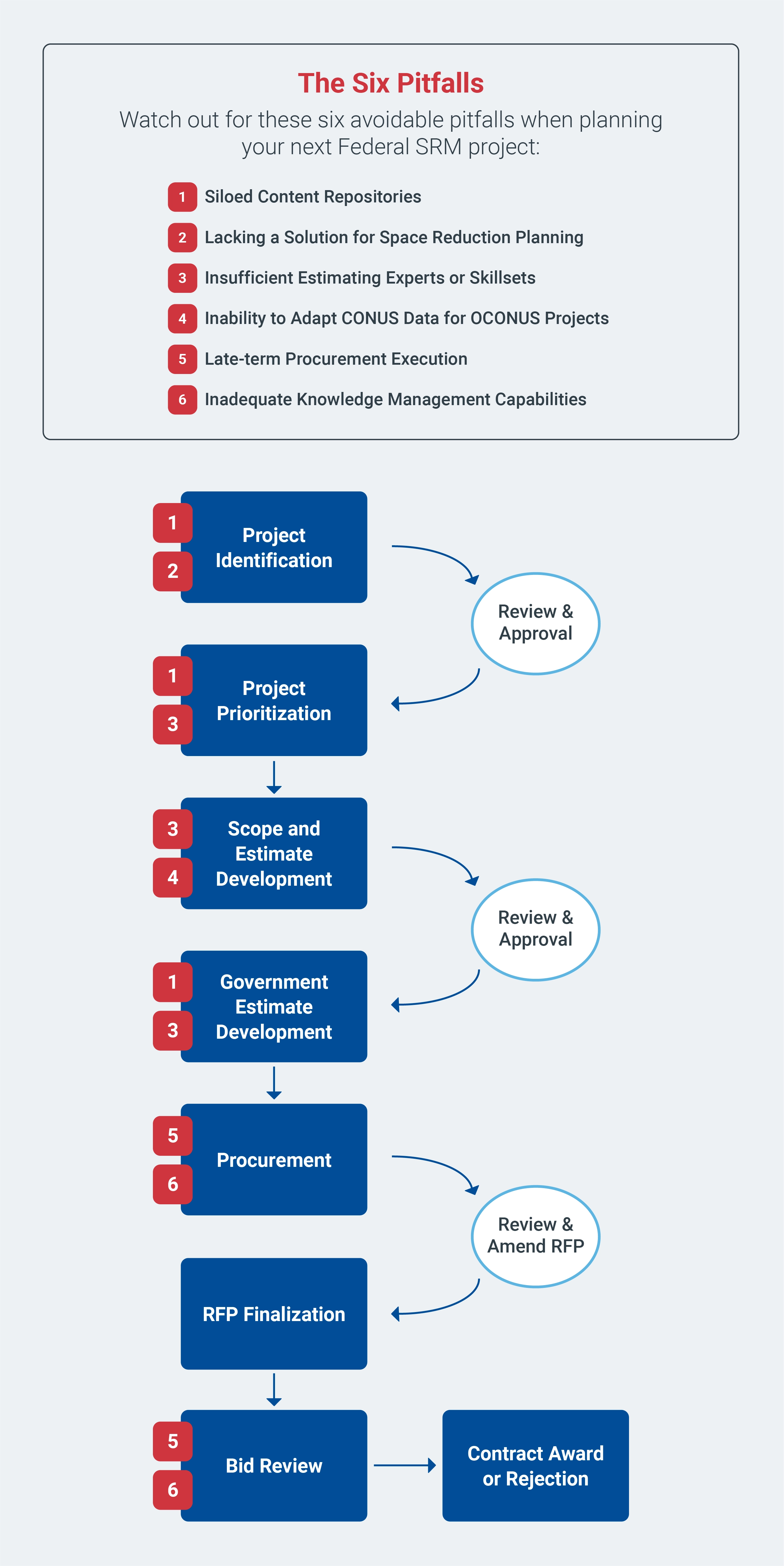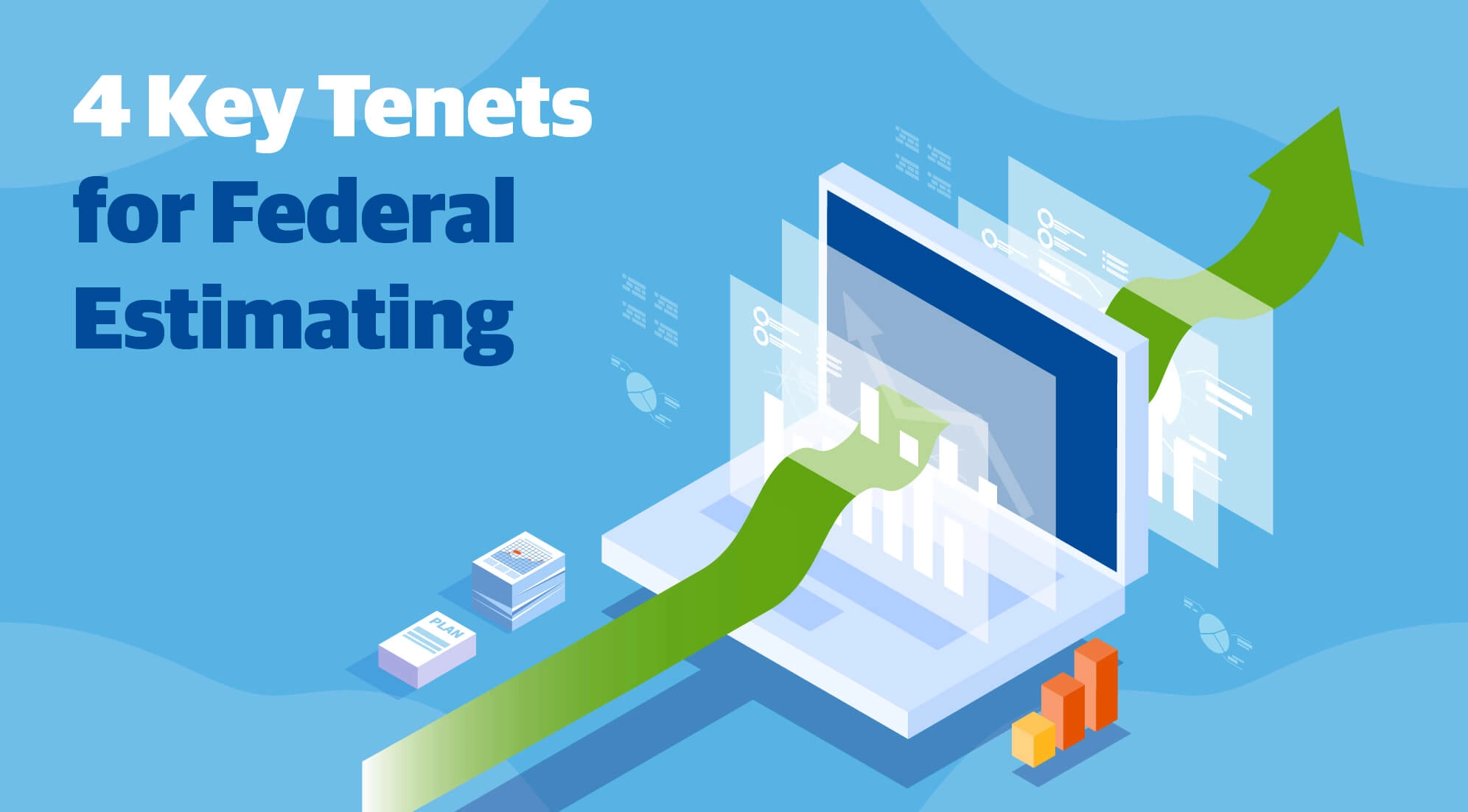6 Pitfalls to Avoid in Estimating SRM Projects
As a Federal Cost Engineer, you are under more and more scrutiny to deliver successful sustainment, renovation and maintenance (SRM) projects for government assets. An increase in SRM projects could lead to greater volume and variety of work for contractors and estimators working for the Federal government. And with that increase comes the need for greater consistency, accuracy and efficiency when reviewing project estimates.
As any experienced estimator will tell you, creating accurate estimates is a tough job. That’s doubly true when the estimates must follow a lengthy and rigorous approval process, as Federal estimates must. Such processes, where estimates run through several steps overseen by several parties, can be riddled with potential fail points.
To help you avoid the headaches of fail points and the rework they create, we’ve identified six key pitfalls that can interrupt, delay and derail the Federal SRM project estimating process. We’ve also plotted them along a standard estimate approval process, so you can see where each might inhibit your progress.
1. Siloed Content Repositories
The construction industry is riddled with data systems that do not talk to each other caused by a lack of data integration and analytics for CMMS/EAM software platforms. This means that data and content must be manually moved from one system or repository to another, which can lead to an uptick in errors and rework.
2. Lacking a Solution for Space Reduction Planning
Sometimes, the best SRM strategy is to reduce the physical space. While it’s not usually the first option discussed, it is one that should be on the table. Not having a strategy for space reduction can put agencies in a cycle of maintaining failing assets, costing needless time and money.
3. Insufficient Estimating Experts or Skillsets
While this may seem obvious, it’s important not to overlook this pitfall. Personnel limitations exist in every organization and agency. Even if a position is filled, it may be by someone with limited experience. Novice cost estimators may find the nuances of reviewing Federal estimates to be challenging. And without familiarity with proper agency standardizations and reliability centered maintenance (RCM) processes, it is easy to quickly become overwhelmed.
4. Inability to Adapt CONUS Data for OCONUS Projects
The Federal government has myriad installations both within and without the continental U.S. Unfortunately, translating data across international systems is sometimes a near impossible task. While it can be done, there are normally not automated systems like remote condition monitoring to help.
5. Late-Term Procurement Execution
The key to a successful project is for it to be delivered on time and on budget. When your contractor gets a late start, the odds go up that the quality of work will suffer or that you will need to answer to stakeholders impacted by these delays.
6. Inadequate Knowledge Management Capabilities
Collaborating with contractors is key to successful SRM projects, so not having access to tools, like the industrial internet of things, that improve communication and information sharing between project partners will threaten projects. If project knowledge is being sent across inefficient or inconsistent channels, you can expect to run into delays and frustrations somewhere in the project timeline.

The Right Tools Can Help
Given the current tumultuous and uncertain market, creating a reliable estimate can be a daunting task, even when avoiding the above pitfalls. But you don’t have to go at it alone. The right software tool can make your job easier by giving you reputable data as a starting point and efficient tools to generate estimates. RSMeans Data Online has served as the industry-leading estimating software for over a decade and is widely utilized throughout federal and military spaces. Plus, it’s now FedRAMP authorized, so you can rest assured that your agency’s or installation’s data is secure from unwarranted access. Request your free trial of RSMeans Data Online today and start making estimates faster than before.
Share this:





